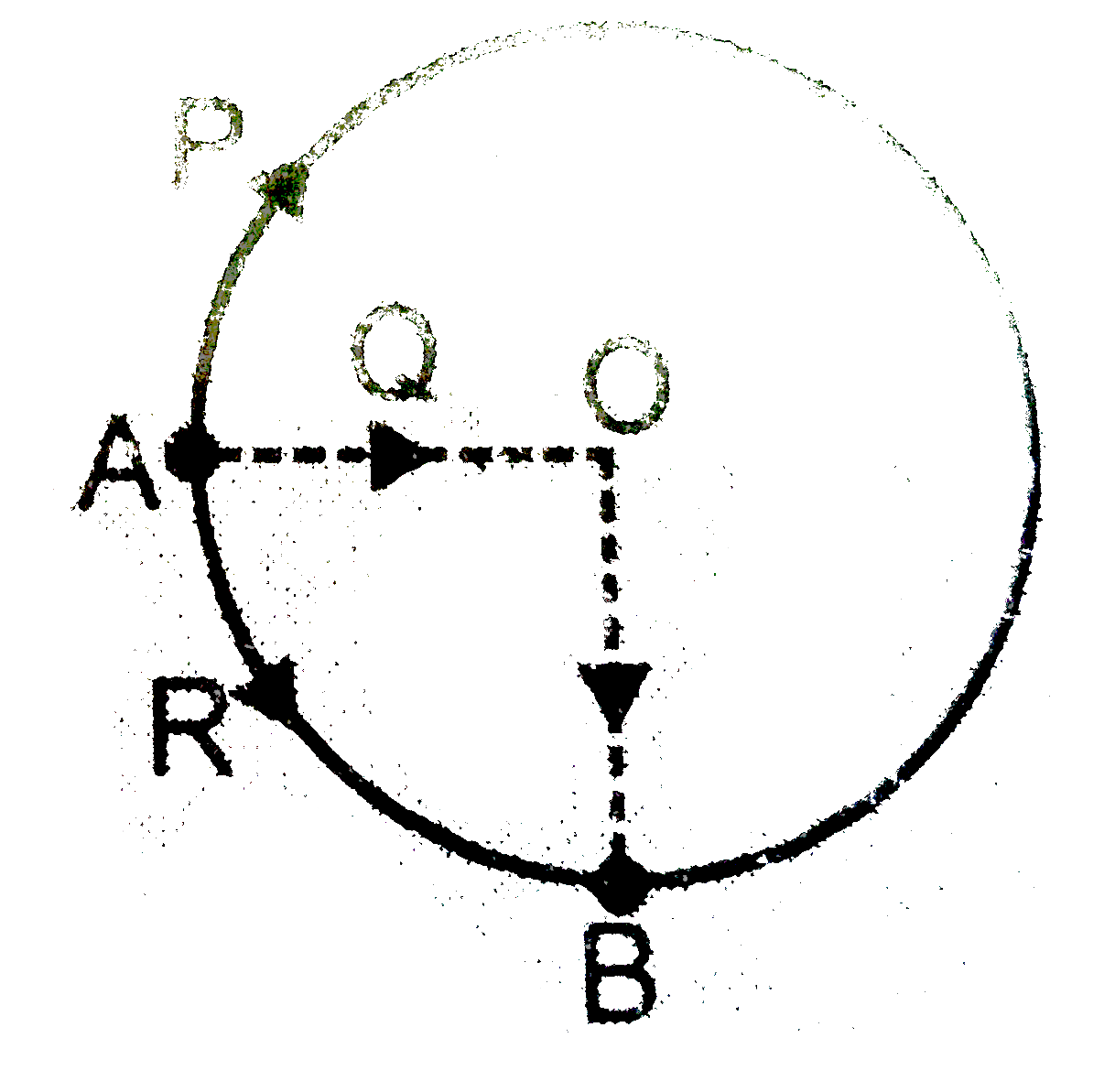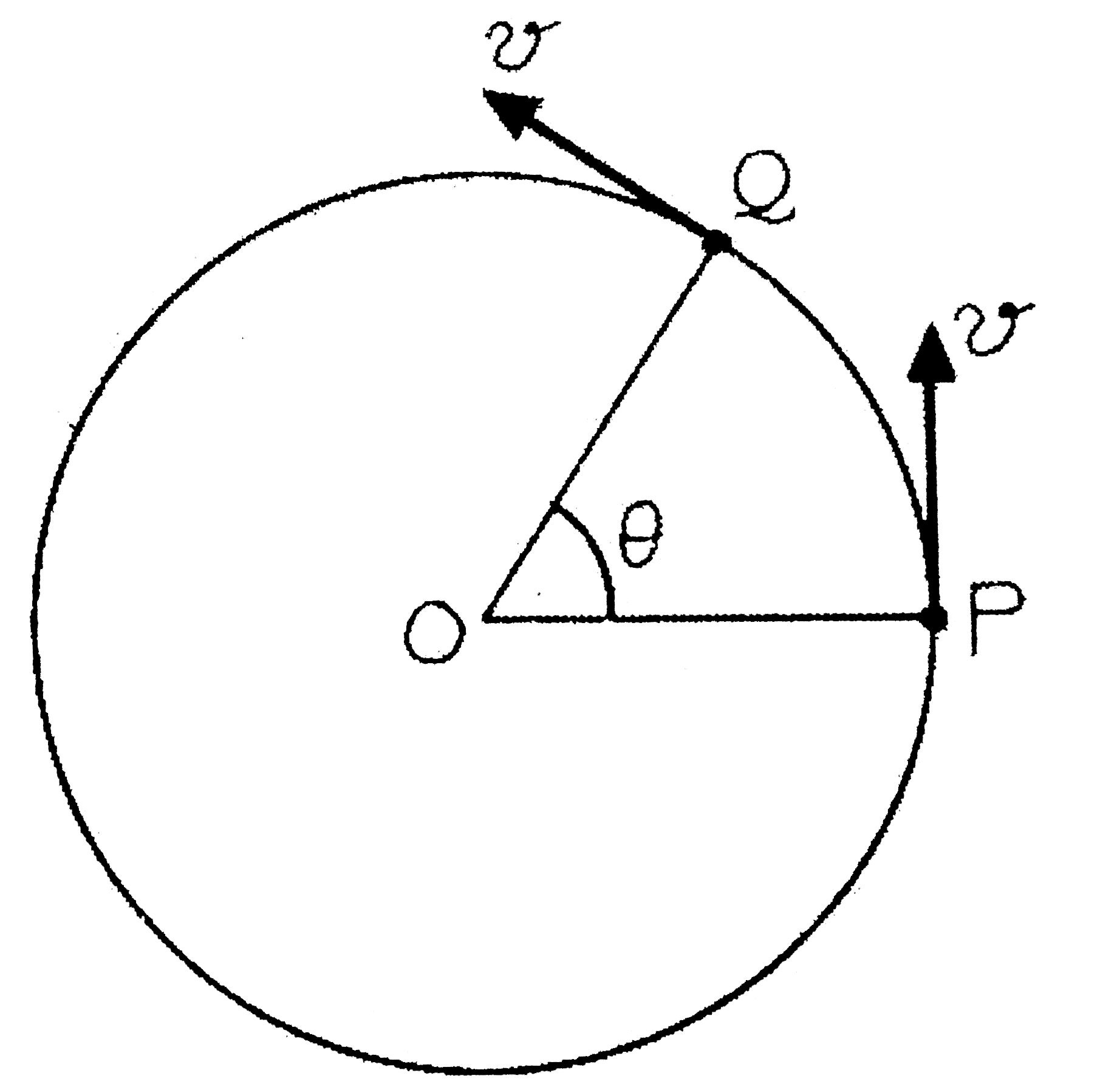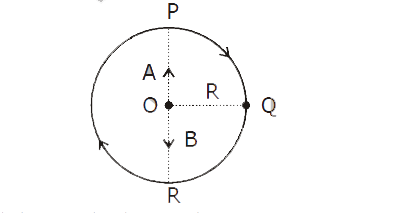Three particles P, Q and R
are situated at point A on the circular path of radius 10m. All three particles move along different path and reach at point B shown in figure. Then the ratio of distance traversed by particle P and Q is:-
 Solution in Gujrati
Solution in Gujrati
The correct Answer is:B
At maximum range vertical displacement =0
⇒t'=2usinθg. So range R
(ucosθ)(2usinθg)−12a(2usinθg)2
=2u2sinθcosθg(ga−tanθ)
Topper's Solved these Questions
- BOOK - ALLEN CHAPTER - MOTION IN A PALNEEXERCISE - EXERCISE-04[A]35videos
MOTION IN A PALNE
- BOOK - ALLEN CHAPTER - MOTION IN A PALNEEXERCISE - Exercise-04[B]14videos
MOTION IN A PALNE
- BOOK - ALLEN CHAPTER - MOTION IN A PALNEEXERCISE - Comprehension#64videos
MOTION IN A PALNE
- BOOK - ALLEN CHAPTER - KINEMATICS-2DEXERCISE - Exercise (O-2)47videos
KINEMATICS-2D
- BOOK - ALLEN CHAPTER - NEWTON'S LAWS OF MOTION & FRICTIONEXERCISE - EXERCISE (JA)4videos
NEWTON'S LAWS OF MOTION & FRICTION
Similar Questions
A person walks up a stalled escalator in 90 s. When standingon the same escalator, now moving, he is carried in 60 s.The time it would take him to walk up the moving escalator will be:
02:33View SolutionA boat is moving with a velocity 3ˆi+4ˆj with respect to ground. The water in the river is moving with a velocity −3ˆi−4ˆj with respect to ground. The relative velocity of the boat with respect to water is.
02:10View SolutionA particle is moving along a circular along a circular path of radius 5 m with a uniform speed 5ms−1. What will be the average acceleration when the particle completes half revolution?
02:02View SolutionA particle is moving in xy-plane .At certain instant the components of its velocity and acceleration are as follows ux=3m/s,uy=4m/s,ax=2m/s2anday=1m/s2. The rate of change of speed at this moment is
04:41View SolutionA piece of wire is bent in the shape of a parabola y=kx2 (y-axis vertical) with a bead of mass m on it. The bead can slide on the wire without friction. It stays at the lowest point of the parabola when the wire is at rest. The wire is now accelerated parallel to the x-axis with a constant acceleration a. The distance of the new equilibrium position of the bead, where the bead can stay at rest with respect to the wire, from the y-axis is:
View SolutionA particle is moving on a circular path of radius r with uniform velocity v. The change in velocity when the particle moves from P to Q is (anglePOQ=40^@ )
02:10View SolutionA particle moves along a circular path of radius R. The distance and displacement of a particle after one completer revolution is
02:11View SolutionA particle moves from A to B in a circular path of radius R covering an angle theta as shown in figure. Find the ratio of magnitude of distance and magnitude of displacement of the particle.
07:31View SolutionA particle starts from point A moves along a straight line path with an acceleration given by a = p - qx where p, q are connected and x is distance from point A . The particle stops at point B. The maximum velocity of the particle is
03:16View SolutionA particle is moving on a circular path of radius R with constant speed v. During motion of the particle form point A to point B
02:24View SolutionA particle moves along a circular path of radius R. The distance and displacement of a particle after one completer revolution is
07:41View Solutionएक कण R त्रिज्या के वृतीय पथ प् गतिमान है एक चक्क्र पूरा करने पर कण का विस्थापन तथा इसके द्वारा तय दुरी है ---
02:51View Solutionएक कण एकसमान चाल v से r त्रिज्या के व्रतकार पथ पर जिसका केंद्र O है, चल रहा है । जब कण व्रत पर बिंदु P से Q तक चलता है, जहां ∠POQ=θ तब वेग में परिवर्तन का परिमाण है :
 View Solution
View SolutionTwo particles A and B are present at centre (O) of circle of a radius (R) as shown in figure. Particle A moves along path OPQ and reach at point Q in 2 sec. Another particle B moves along path ORPQ reach at Q in 5 sec., then ratio of average velocity of A to B -
 02:38View Solution
02:38View Solutionएक कण R त्रिज्या के वृतीय पथ पर गति करता है। कण के अर्ध परिक्रमण काल में इसका विस्थापन ________ तथा कण द्वारा तय की गई दुरी __________होगी।
View SolutionA particle is moving with a uniform speed v in a circular path of radius r with the centre at 0. When the particle moves from a point P to Q on the circle such that ∠POQ=θ , then the magnitude of the change in velocity is
View Solution

